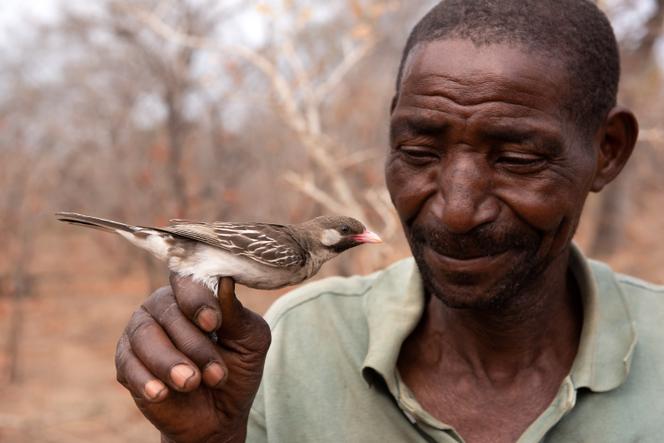


It is a real Christmas tale. "Once upon a time, there was an African bird who, long, long ago, made an alliance with man...." The rest is just as enchanting. The winged creature loves beeswax. Finding the wild beehives tucked away in the hollows of trees is simple, but the delicate bird is wary of the stinging insect. The agile biped feasts on the honey of the hymenopterans; all it takes is to locate their dwellings. Alas, he's a fool when it comes to this, but once he finds the lair of these foragers, he proves highly adept at smoking out the swarm and plundering their treasures.
So, one fine morning, birds and homo-sapiens sealed a tacit agreement. The bird would guide the homo-sapiens to the hives; and in return, homo-sapiens would reward his feathered pilot with fragments of the feast – wax combs – not forgetting, of course, to pocket the precious amber substance first.
A children's fairytale? No. In fact, the story is so true that Science magazine highlighted an episode of it on December 8. This rare bird is called the greater honeyguide (Indicator indicator), a species endemic to sub-Saharan Africa – and one of the few birds capable of digesting wax. With its round eyes, white belly, shoulder splashed with a yellow spot and back adorned with hazelnut feathers, this shrewd bird plays a subtle game at under 50 grams.
The pact it has signed with the honey hunters is truly exceptional. In nature, there are many examples of reciprocal interaction between two wild species: a lasting relationship that benefits both partners. But here, our bird is neither domesticated nor coerced. Only one other case of mutualism between man and wild animal is known: that of dolphins chasing schools of mullet towards fishermen's nets, off the coast of Brazil.
As early as 1588, Portuguese missionary Joao dos Santos observed one of these impudent fowl munching the candles in his church in what is now Mozambique. He went on to describe its unlikely alliance with humans. But the story sounded too good to be true! Its veracity was not acknowledged until 1989, thanks to the field observations of two naturalists in Kenya.
Since then, science has made progress. The authors of the new study traveled to Mozambique and Tanzania to follow, respectively, the Yao people, a Bantu culture, and the Hadza people, hunter-gatherers. Each of these ethnic groups uses a specific sound to call the bird. The Yao make a loud trill, followed by a short "brrr-hm" growl, while the Hadza emit a melodic whistle.
You have 65% of this article left to read. The rest is for subscribers only.
